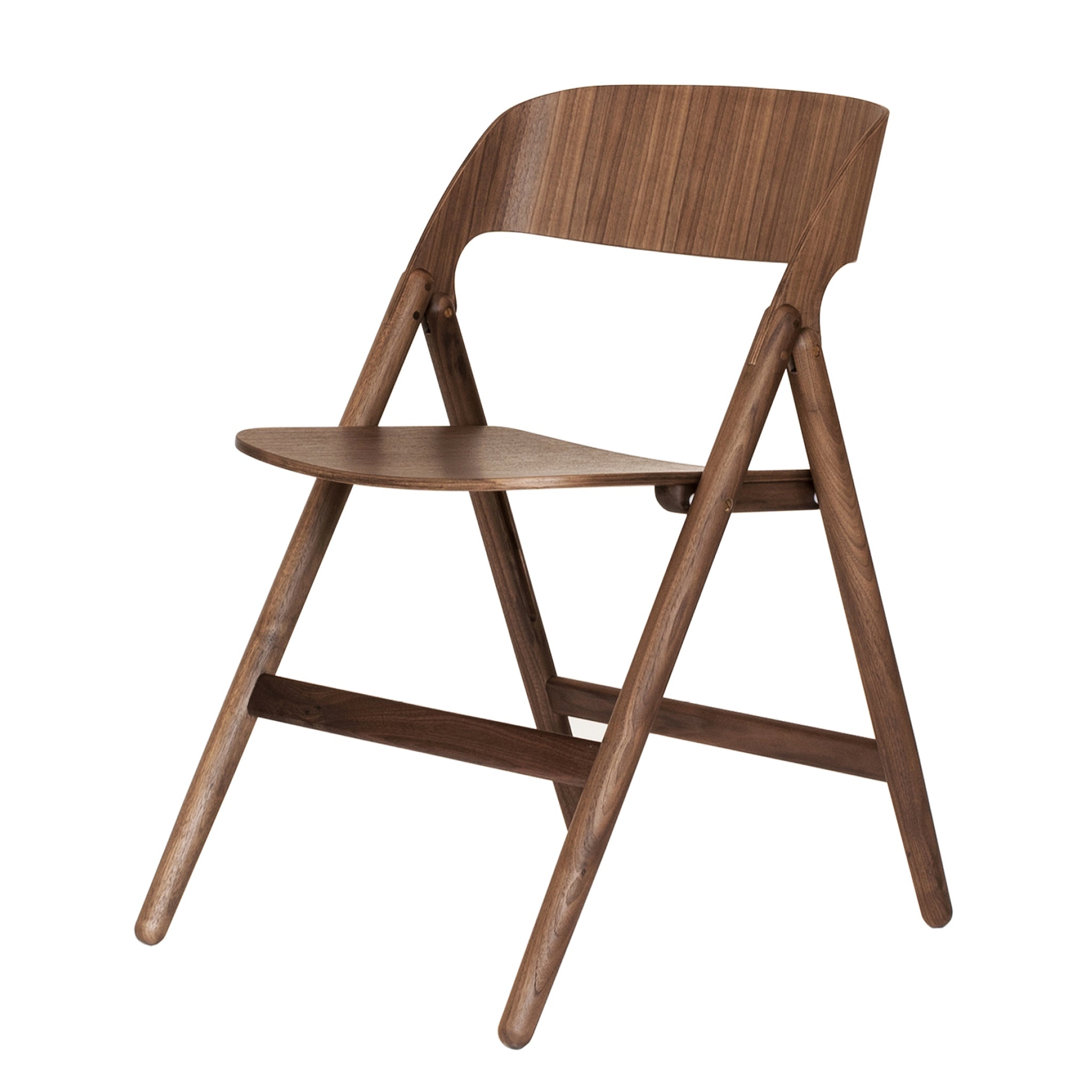
Narin Folding Chair
Case
Designed by David Irwin.
This award-winning folding chair is lightweight, easy to move around and can be stored in condensed stacks which occupy minimal space, or hung on the wall with a hook.
Winner of the Design Guild Mark Award and Wood Award for Best Production Made project in 2017, the Narin Folding Chair is an ideal seating option for dining or home office spaces
"While practical, traditional folding chairs can be pretty boring. Designer David Irwin took a look at the design and gave it a beautiful, modern update." - Design Milk.
Add an optional seat pad for added comfort.
Details
Materials
Crafted with a solid wood frame, this smart and robust design features a smooth sweeping transition from the turned legs into the formed backrest, which also doubles as the mount for the pivot from where the back leg rotates. The seat and back are formed from layered birch ply with a clear lacquer oak veneer and stainless steel fixings.
Dimensions
H761 × W498 × D500 mm
In Stock
In stock and ready to despatch! UK delivery usually 1-2 days. Larger items and non mainland addresses will take a little longer.
Quick Ship false weeks
Good news! This popular item is usually available on a quick lead time in the finish you selected (other options may have different lead time).
Default two man delivery notice
Default two man delivery information
Bespoke terms & Conditions Title
This item is made specially for you and special terms apply (see Terms and Conditions). Lead times are provided as an estimate and can vary. Read More
Made to Order false weeks
This item is made specially for you in the options you choose and special terms apply. Lead times are provided as an estimate only and can vary.
Lead time 6 weeks
Lead times are provided as a general guide to what is typical for this product but can vary depending on the specific variant and quantity you choose as well as current availability. Read More
Order In Store / Contact Us
This product is available to order in store. Contact us for details.
Added to your basket
More information about Narin Folding Chair by Case
675 Chair, 1953
Whereas 1930s furniture had been heavy and ponderous, Day’s post-war designs were light on their feet and economical in their use of materials. A minimalist frame was adopted for the 675 Chair, a dining chair with a slender floating moulded plywood seat back.
In September 2014 Case Furniture launched an authentic new production of Robin Days’ classic 675 Chair (1952). An example of the original production was sourced as the template for development work carried out in consultation with the Robin and Lucienne Day Foundation. It was awarded a Design Guild Mark by the Furniture Makers' Company in March 2015.

Robin and Lucienne Day

Together, Robin and Lucienne Day transformed British design after World War II with striking furniture and textiles that signaled a new era of modernist sensibilities for everyday living. Robin’s revolutionary furniture designs introduced materials such as plastic, steel and plywood to homes, offices and schools. His stacking polypropylene chair endures as an icon and now graces a Royal Mail postage stamp. Lucienne’s abstract textile designs brought accessible elegance into the homes of postwar British consumers.
The Days’ fresh design approaches, including their contributions to the Royal Festival Hall in 1951, helped fuel the artistic and commercial awakening that led Britain out of the devastation of World War II.